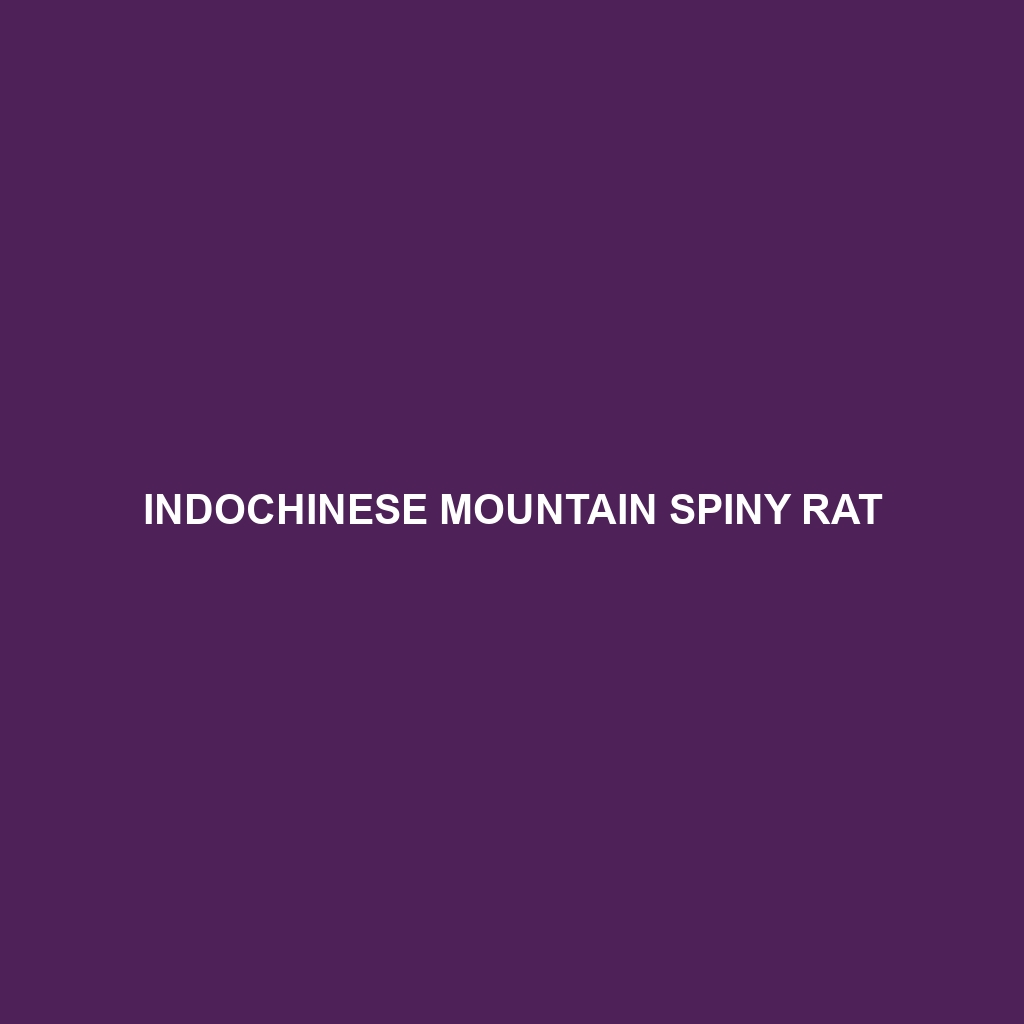Indochinese Mountain Spiny Rat
Common Name: Indochinese Mountain Spiny Rat
Scientific Name:
Habitat
The Indochinese Mountain Spiny Rat is primarily found in the mountainous regions of Southeast Asia, specifically in countries such as Vietnam, Laos, and Thailand. These rodents thrive in forested areas, typically preferring dense vegetation where they can find shelter and food. Their habitat often includes montane and evergreen forests, showcasing their adaptability to high-altitude environments with cooler climates.
Physical Characteristics
The Indochinese Mountain Spiny Rat is a medium-sized rodent, measuring approximately 20 to 30 centimeters in length. It is known for its distinctive spiny fur, which is a combination of softer undercoat and longer, stiffer guard hairs that give it a unique texture. The coloration generally ranges from dark brown to gray, with some individuals displaying lighter undersides. Notable features include its large ears and a long, scaly tail that helps in balance and maneuverability through its arboreal surroundings.
Behavior
Typically nocturnal, the Indochinese Mountain Spiny Rat exhibits a range of interesting behaviors. It is known for its agility and ability to climb trees, where it often forages for food. These rodents are social creatures, often seen in small groups, which may play a role in their foraging and nesting habits. They communicate through a series of vocalizations and scent markings, establishing territory and social bonds within their community.
Diet
The diet of the Indochinese Mountain Spiny Rat primarily consists of fruits, seeds, and various types of vegetation. They are also known to feed on roots and insects, making them omnivorous. This diverse diet is essential for their survival in the wild, allowing them to adapt to different seasonal food availability and maintain their energy levels throughout their active nocturnal foraging activities.
Reproduction
Indochinese Mountain Spiny Rats typically breed once a year, with the breeding season occurring during the wetter months when food is more plentiful. After a gestation period of approximately 4-5 weeks, females usually give birth to a litter of 2 to 5 offspring. The young are nursed for several weeks before becoming independent, and the nurturing behavior of the mother highlights the species’ commitment to raising its young in a secure environment.
Conservation Status
Currently, the Indochinese Mountain Spiny Rat is classified as *vulnerable* according to the International Union for Conservation of Nature (IUCN). Habitat loss due to deforestation and agricultural development poses significant threats to their survival. Conservation efforts are crucial to ensure their habitat is preserved and to mitigate the impacts of human encroachment on their ecosystem.
Interesting Facts
The Indochinese Mountain Spiny Rat is remarkable for its adaptations to alpine conditions, which include its unique fur that protects against cold temperatures. Additionally, it is often mistaken for other rodent species due to its similar physical traits, making it a subject of interest for both ecologists and researchers alike.
Role in Ecosystem
The Indochinese Mountain Spiny Rat plays a vital role in its ecosystem as a seed disperser and prey for various predators. Its feeding habits contribute to plant regeneration, and it serves as an important food source for larger mammals and birds of prey in its mountainous habitat. Understanding its role enhances our knowledge of biodiversity and the interdependence of species within these ecosystems.
